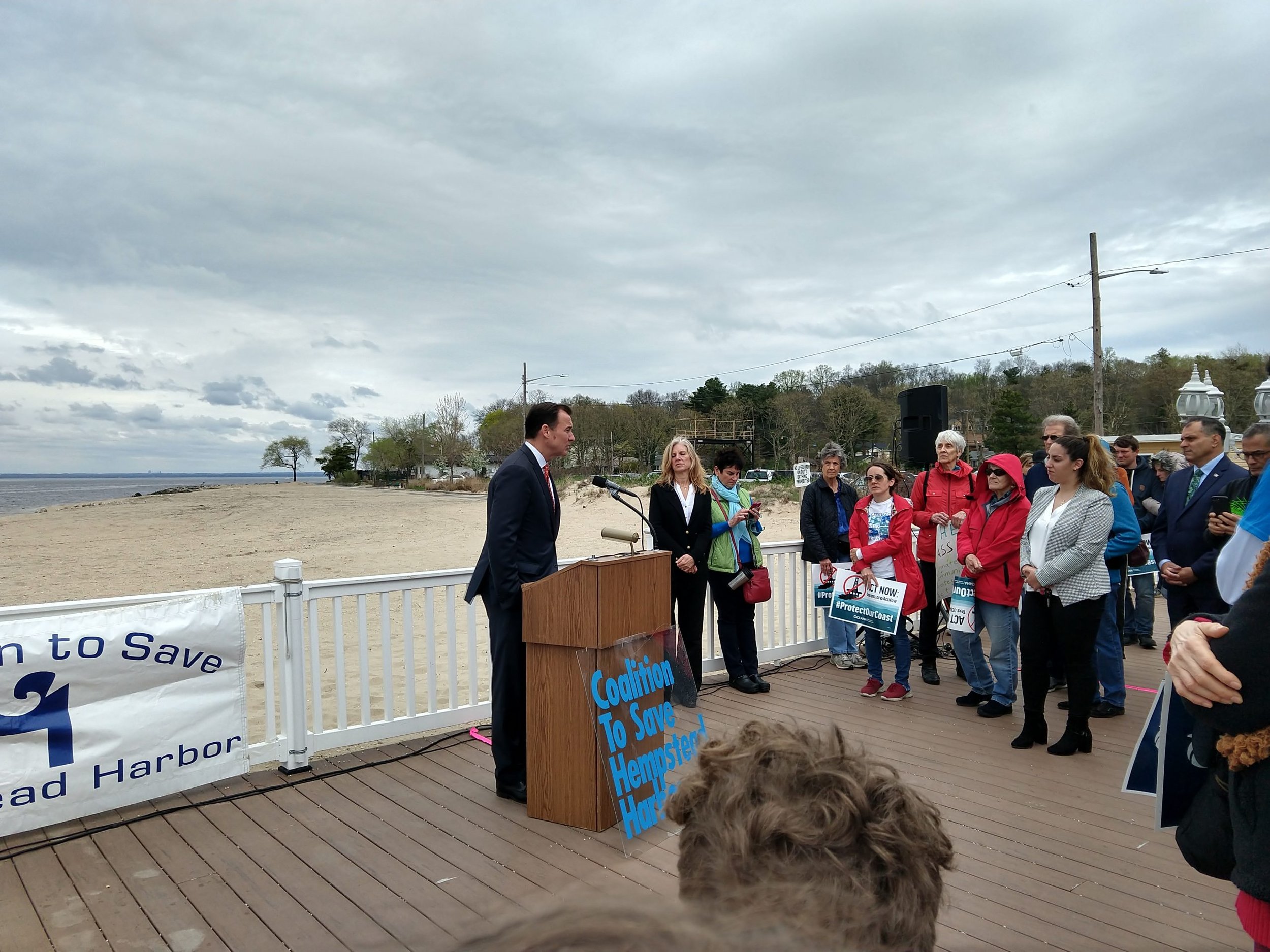
Policy & Planning
At the same time that CSHH developed the water-quality monitoring program for Hempstead Harbor, concerns about the health of Long Island Sound gained increased attention. CSHH participated not only in the meetings and hearings that led to the completion of the Long Island Sound Study’s Comprehensive Conservation and Management Plan, but also to the planning and review meetings for the update of the management plan, which was completed in 2015. CSHH has been a member of the Long Island Sound Study’s Citizens Advisory Committee since 1992 and served for three years as chair of its Communications Subcommittee. CSHH has also participated in meetings related to the development of the Long Island Sound Nitrogen Reduction Strategy.
In 1996, CSHH initiated the creation of the Water-Monitoring Work Group, a soundwide network of environmental agencies and nonprofits connected with water-monitoring programs around Long Island Sound. The work group provided a forum for reviewing current testing parameters and for examining testing results in a broader context. Among the work group’s achievements was completion of the Long Island Sound Mapping Project (July 1998), which mapped sites monitored around Long Island Sound and identified the agencies and organizations responsible for testing. The project was funded through a grant awarded to CSHH, on behalf of the work group, by EPA/Long Island Sound Study.
In 2002, CSHH was asked by the EPA Long Island Sound Study Office to plan and coordinate a Stormwater Workshop to help prepare Long Island communities to meet the requirements of the EPA Phase II Stormwater Regulations. CSHH received a grant to host the workshop, which was cosponsored by the EPA Long Island Sound Office, Long Island Sound Study, and the New York Sea Grant Program.
Long Island Sound Day in Washington, DC
Public officials join CSHH in Earth Day rally at Tappen Beach Park to oppose offshore drilling
In 2009, CSHH became a member of the newly formed Long Island Sound/New York State Sentinel Site Work Group, which was charged with addressing climate change and ways to measure the impacts on Long Island Sound. This was part of a bi-state—New York and Connecticut—approach to understanding climate-change indicators for Long Island Sound and selecting appropriate sites to measure them. In 2011, the Sentinel Monitoring for Climate Change in the Long Island Sound Estuarine and Coastal Ecosystems of New York and Connecticut was completed.
Over the years, CSHH has served on other various policy and planning committees, such as the master-plan committees for Nassau County and the City of Glen Cove as well as review committees for the Scudder’s Pond Restoration Plan, the Glenwood Road/Powerhouse Drain Stormwater Pollution Abatement Plan, and the Town of Oyster Bay Local Waterfront Revitalization Plan.
More recently, CSHH has served as a member of NYS Department of Conservation’s work groups on data sharing and creation of new pathogen total maximum daily loads for local water bodies and Nassau County’s Nine Element Plan for nitrogen-reduction efforts. CSHH has also worked with local environmental agencies and municipalities in addressing storm water runoff and unusual or illicit discharges from local outfalls as well as in nitrogen-reduction efforts under the Long Island Nitrogen Action Plan.
CSHH’s advocacy efforts include letter-writing campaigns, phone calls and visits to local public officials, and organizing or attending rallies and meetings that are intended to elicit support for environmental protection at both a local and regional level. For example, CSHH organized an Earth Day rally in 2019 to oppose offshore drilling and seismic blasting. CSHH has also joined other members of the Long Island Sound Study’s Citizens Advisory Committee on bus rides to Washington, DC, to meet with Long Island Sound congressional reps. The purpose of those trips is to describe the work that has been done to improve water quality and habitat in Long Island Sound and to ask for support in obtaining increased federal funding for this critical national estuary.

Nearly 40 Years of CSHH
The Coalition to Save Hempstead Harbor has been working tirelessly to protect and restore our harbor and surrounding communities since our founding in 1986. In celebration of our 40th anniversary, we look back at what harbor conditions used to be, how they’ve changed for the better, and we look forward to doing the critical work that will protect the harbor’s future.
Thank you to the talented Patrick Wright, Katie Taber, and Allen Moore, along with CSHH’s own Charlie Weinstein, for creating this incredible video. Original music soundtrack created and donated by Dave Diamond.



